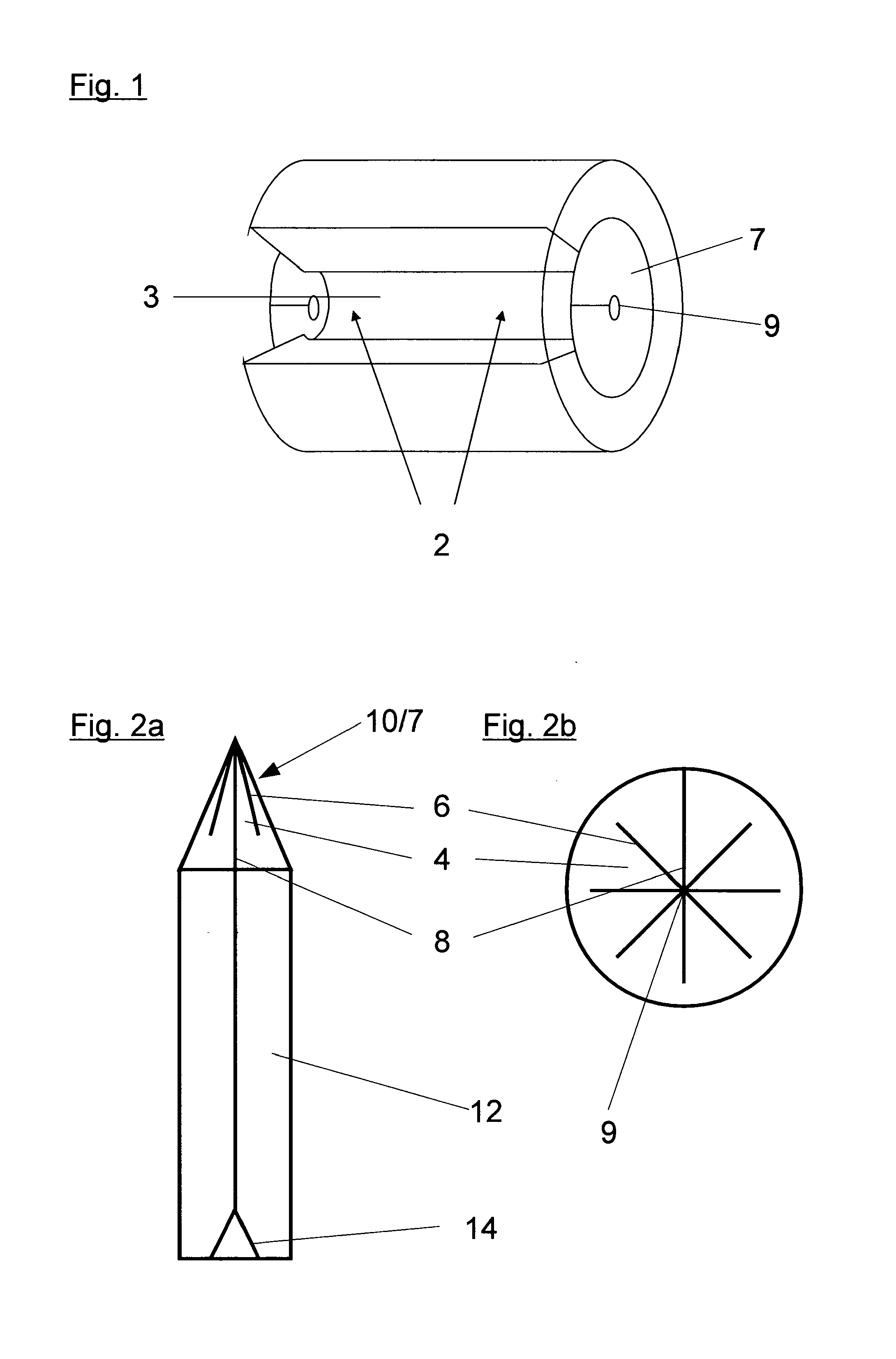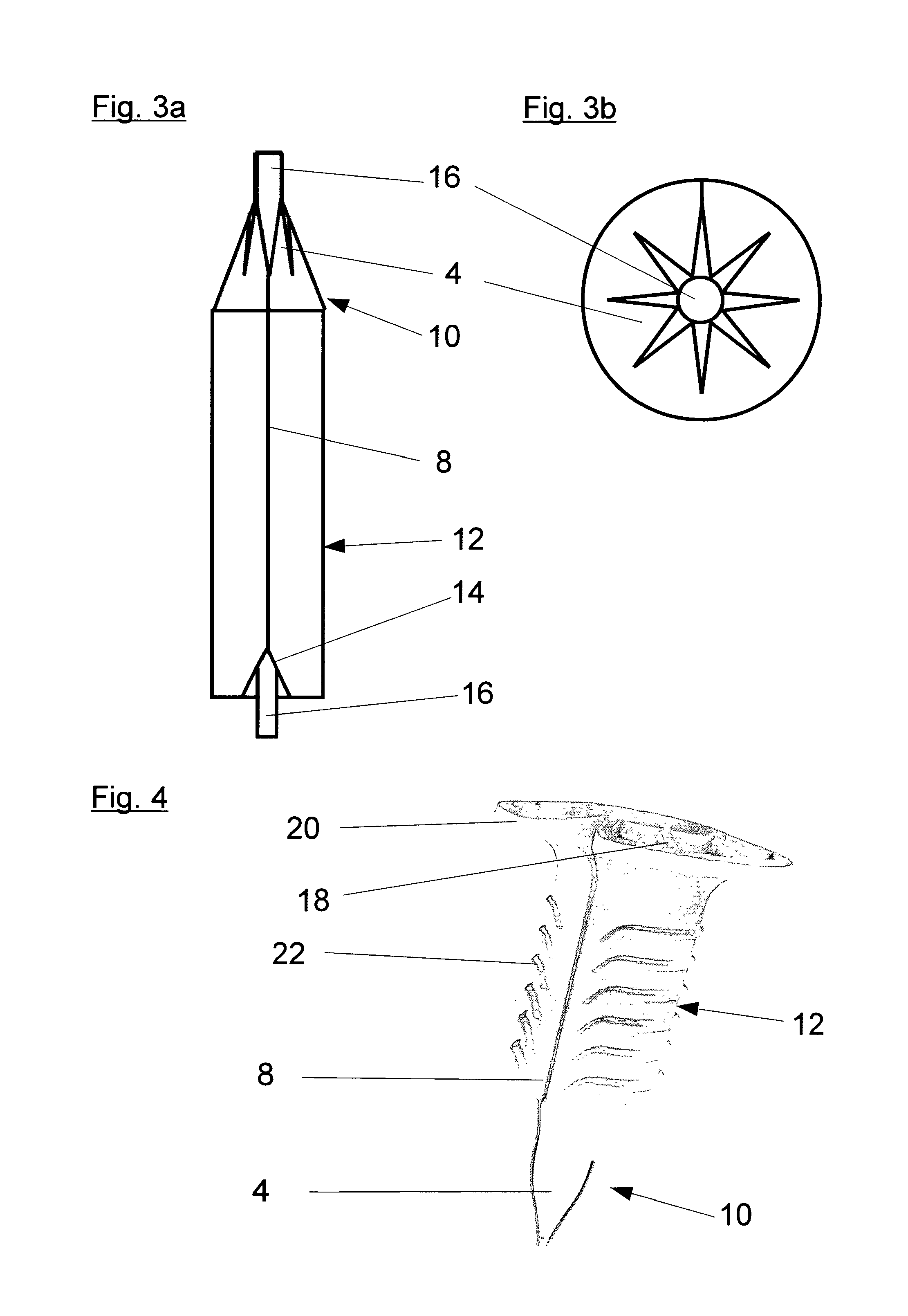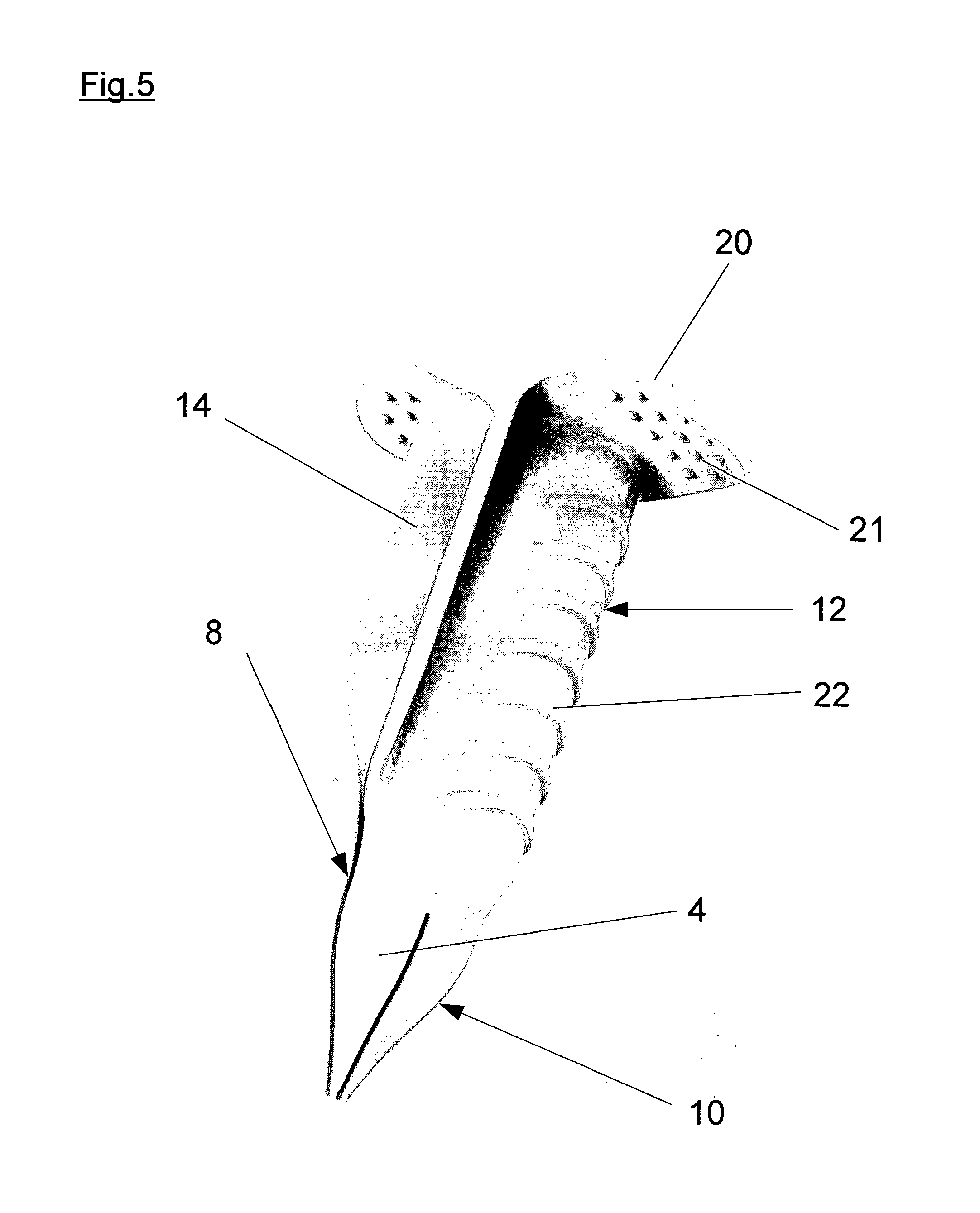Method and applicator for the perioperative disinfection of medical instruments to be inserted through non-natural openings
a technology of perioperative disinfection and non-natural openings, which is applied in the direction of biocide, catheters, hand devices, etc., can solve the problems of contaminating the catheter, entraining germs from deeper skin layers, and costing billions of dollars
- Summary
- Abstract
- Description
- Claims
- Application Information
AI Technical Summary
Benefits of technology
Problems solved by technology
Method used
Image
Examples
example 1
Catheter Contamination in Artificially Infected Fresh Skin with and without Treatment Using the Composition According to the Invention
[0207]Gel Preparation:
[0208]A) Octenidine gel 0.2%
[0209]B) Gel foundation: Carbomer 1% (here: Cornegel: (Corneregel Dexpanthenol 5% in Carbomer 40-60,000 MPas (Bausch & Lomb, Dr. Mann Ph))) viscosity 50,000 mPa s, pH 5.5 adjusted with NaOH, Dexpanthenol addition 5%.
[0210]Pig skin with muscles connected to the skin was washed with water and soap. Subsequently, the tissue under the skin was removed such that the underside was sterile. The thickness of the preparation ranged from 3 to 6 mm. Using approximately 200 μl bacteria concentrate (staphylococcus epidermidis spp, obtained from fresh pig skin (minipig)) (approx. 0.5-1×105 colony forming units per ml)), the epidermis was contaminated over an area of approx. 10×10 cm, the skin was then incubated for 30 min in a culture dish at 37° C. Subsequently, the various gels were applied with an applicator on c...
exemplary embodiment 2
Catheter Contamination in Artificially Infected Fresh Skin with and without Treatment Using the Composition According to the Invention
[0215]Testing 0.6% ETD2020+2.3% PVP+0.05% octenidine gel in a pigskin model
[0216]Gel production of 0.6% ETD2020+2.3% PVP+0.05 octenidine[0217]1.98 g ETD2020+300 ml dH2O (0.66%)[0218]swelling at 60° C. under agitation (>1 h)
[0219]adjusting with NaOH to pH 6.3
[0220]producing 23% PVP+66.5% dH2O+0.5% octenidine(di)hydrochloride
[0221]entering under agitation 10% of the PVP / octenidine mixture to 0.66% gel=
[0222]0.6% ETD2020+2.3% PVP+0.05% octenidine
[0223]Homogenous mixture, completely clear, no particles discernible.
Gel componentsManufacturerCarbopol ® ETD2020 NF PolymerLubrizolSodium hydroxideROTHOctenidine(di)hydrochlorideCaeloPolyvinyl pyrrolidone K90 M: 360 000 g / molROTHBi-distilled water
[0224]Execution of the Experiment / Results:
[0225]Approximately 5×6 cm skin was taken from the groin of a pig 10 min after death.
[0226]At the day of the experiment the sk...
exemplary embodiment 3
Catheter Contamination of Artificially Infected Fresh Skin with and without Treatment Using the Composition According to the Invention
[0235]Testing a germ (V1815 staph epidermidis) with 0.1% octenidine in 0.85% carbomer gel (+5% dexpanthenol) on skin in a pigskin model.
Gel componentsManufacturerCarbopol 980OTC Pharma, BönenSodium hydroxideROTHOctenidine(di)hydrochlorideCaeloAqua bidestSterile cannulas G17, whiteB. Braun
[0236]Execution of the Experiment / Results:
[0237]Fresh pig skin was contaminated at the top with approximately 60 μl concentrate of staph epidermidis V1815 by placing the skin onto the bacteria concentrate in a culture dish. After a 2½ h incubation period at 37° C. in the incubator the skin was mounted on a special syringe box. Apply gel onto the cannula (also the cannulas without any gel as a control), pierce the skin with the cannulas. The cannula is pierced only 1× through the skin (not pulled back), pull out mandrin, cut off in a sterile fashion at the back of the ...
PUM
| Property | Measurement | Unit |
|---|---|---|
| Percent by mass | aaaaa | aaaaa |
| Percent by mass | aaaaa | aaaaa |
| Percent by mass | aaaaa | aaaaa |
Abstract
Description
Claims
Application Information
 Login to View More
Login to View More - R&D
- Intellectual Property
- Life Sciences
- Materials
- Tech Scout
- Unparalleled Data Quality
- Higher Quality Content
- 60% Fewer Hallucinations
Browse by: Latest US Patents, China's latest patents, Technical Efficacy Thesaurus, Application Domain, Technology Topic, Popular Technical Reports.
© 2025 PatSnap. All rights reserved.Legal|Privacy policy|Modern Slavery Act Transparency Statement|Sitemap|About US| Contact US: help@patsnap.com



